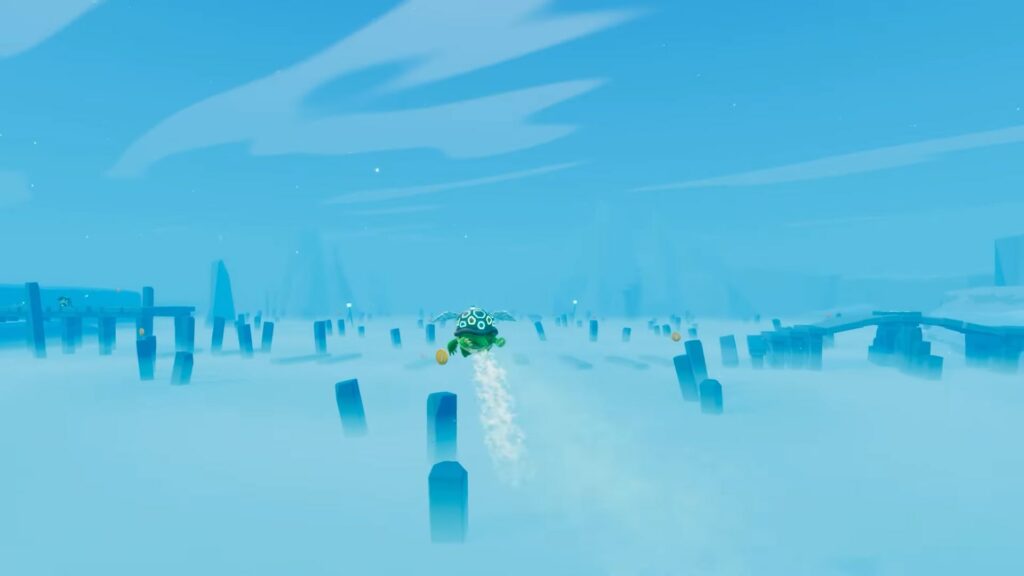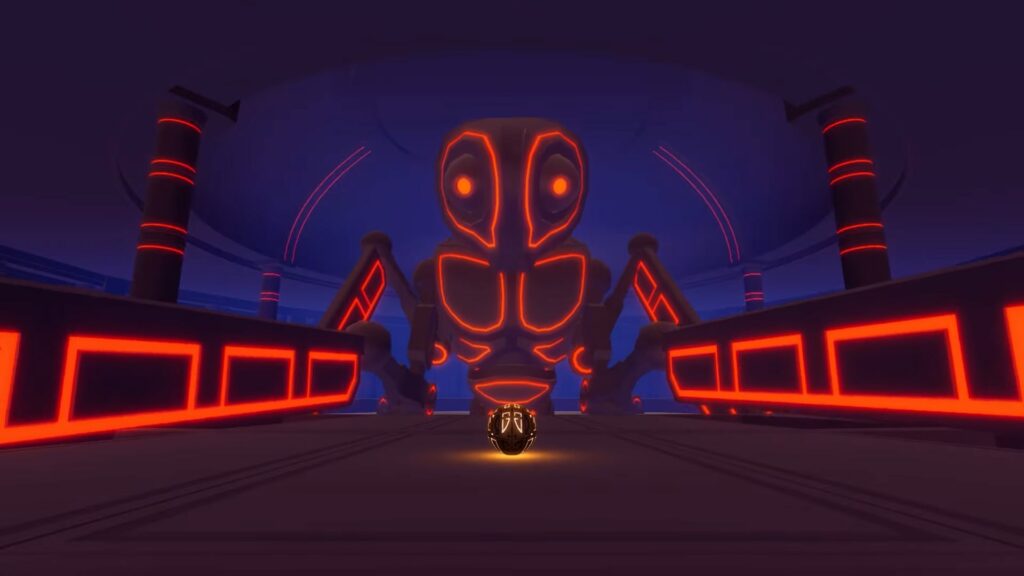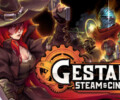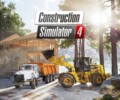
Developer: Bolverk Games
Publisher: Bolverk Games
Platform: Switch, PC
Tested on: Switch
Glyph – Review
Danish video game developer Bolverk Games typically specializes in VR games, but with their latest release, they’ve gotten out of that comfort zone. 3D puzzle platformer Glyph marks the studio’s debut on the Nintendo Switch and although it’s available on Steam as well, it’s clear from the Bolverk Games’ website that the game was developed with Nintendo’s hybrid in mind. It’s an ambitious undertaking, so we took a look at Glyph to see whether it’s a successful debut, or if Bolverk Games bit off more than they could chew.
Story
There is a surprisingly intricate backstory to be found in Glyph, centered around the downfall of an ancient civilization. The titular Glyph is a mechanical scarab-like creature that is tasked with restoring the former glory of this civilization, which is done by reconstructing an ancient temple and subsequently taking down the evil force within. It’s not the most original story, but it’s far more effort than what you’d typically expect from a puzzle platformer. As such, it’s a bit of a shame to see how the story is delivered to the player. Glyph’s lore is presented by short text blurbs that are easily missed and really require the player to pay attention if they want to understand what is going on. Of course, the focus here is on the gameplay, and you can still enjoy the game even if you’re completely going to ignore the story. Still, the way the story is implemented feels like a missed opportunity, and we would’ve preferred a more prominent presentation.
Graphics
Bolverk Games went for a slick and clean approach to bring the world of Glyph to life. The majority of the stages are presented as vast, endless desert plains with the platforms that make up the puzzles taking on the form of stone slabs, with other stages set inside ancient temple ruïns. While the game lacks intricate details and textures, what’s present here does get the point across. Going for a desert setting was a smart choice, as having the game take place across a lush field of grass would’ve been far less convincing had the same kind of minimalistic philosophy been applied to the design of the world. Visual variety is provided through various light effects and having stages that are set at different times of the day. This means that you’ll see stages backlit by a sunset or that take place at night and this ensures that the game doesn’t feel like a retread of the same stage over and over. For the most part, the world looks appropriate but it’s clear that the graphic artists went for function over style. Naturally, this comes with the advantage that the game isn’t too taxing on your hardware and it looks as good as it should as a result.
Sound
Just like with the visuals, Bolverk Games also opted for a minimalist approach when it comes to Glyph’s soundscape. There is no voice acting and even the sound effects are reduced to whatever is absolutely necessary, without any bells or whistles. The soundtrack is atmospheric and relaxing, and almost feels ethereal. It’s the perfect accompaniment to a game about an ancient civilization, though outside of the game it’s forgettable.
Gameplay
Glyph is a puzzle platformer where you take control of the titular mechanical scarab as you navigate it through more than 80 puzzle stages. As with any platformer, the aim is to get to the end of the stage while dealing with any obstacles you encounter. The puzzles themselves are usually fairly obvious and the challenge in the game doesn’t come from figuring out how you’re supposed to beat a stage, but from actually beating it. Beating a stage requires you to pick up a number of keys and subsequently make it to the portal at the end. You’ll also pick up treasures along the way, including gemstones, coins and scarab-shaped talismans. Each of these has a specific use and you keep the ones you pick up during a stage run, even if you die. Keys are lost and will need to be collected again upon death, however.
At the beginning of the game, Glyph is only able to roll around, but as you progress through the lengthy tutorial section, you’ll unlock new abilities, ranging from double jumping to being able to transform into your scarab form and perform a short glide. These actions are easy enough to perform individually, and the key to actually mastering Glyph is in combining them. For example, one of the game’s tutorial combos involves jumping, slamming into the ground so you bounce up again and then double jumping so you gain enough height to perform a longer glide. As you progress through the game, stages get more difficult and require more intricate action combos in order to beat them.
One of the more impressive things about Glyph is the amount of information that the game is able to relay to the player without relying on an overload of information, once you make it through the tutorial stage. You can tell whether Glyph is charged up for jumping (or double jumping) because the critter lights up accordingly. Stage hazards glow a fiery orange while beneficial parts of a stage take on a bluish-white hue. Stage hazards -and sand- will instantly kill you if you touch them, sending you back to the start of the stage. While this means that you’ll have to redo the entire stage, even if you die right at the end, the stages are fairly short affairs that should only take a few minutes to complete if all goes according to plan.
For the most part, Glyph is a very forgiving game. You have infinite lives and will instantly respawn upon death, and any collectibles you picked up -minus stage keys- will remain in your inventory. In theory, most seasoned gamers shouldn’t find the game too challenging. However, things are different in practice as Glyph can be frustratingly difficult at times, though not by design. Some of the stages require leaps of faith as the camera doesn’t always provide you with the best angle when making a jump that requires you to land on a single square platform. At other times, it’s difficult to find the right momentum to reach a platform or boost ring, which recharges your double jump in mid-air. Some of the trickier stages will require luck or several dozen attempts, and it is when you hit one of these stages, Glyph can become more frustrating than fun to play. That’s not to say that the game is ridiculously hard to complete, but there are occasional difficulty spikes that made us turn off the game.
These difficulty spikes are the exception rather than a common occurrence, however, and for the most part, Glyph succeeds in what it sets out to do. Gameplay-wise, nothing in Glyph stands out as particularly original, with the core gameplay resembling controlling Samus’ ball form in the Metroid Prime games mixed with a thirteen-in-a-dozen 3D platformer. What you’re getting here is still solid though, apart from the occasional difficulty spike. With 80+ stages, secrets hidden among the puzzle stages, and a variety of different skins for Glyph (including a flying turtle and a ghost), this is a title that is sure to keep you occupied for quite some time.
Conclusion
Glyph might not be a title that revolutionizes the puzzle platformer genre, but it’s still a decent game. You’re getting a title that feels very polished thanks to its tight gameplay and minimalist aesthetics. The game does suffer from a few issues with difficulty spikes and the narrative elements could’ve been implemented in a more engaging way, but overall, this is a title well worth seeking out if you’re in the market for a puzzle platformer.
Glyph - Review,









No Comments